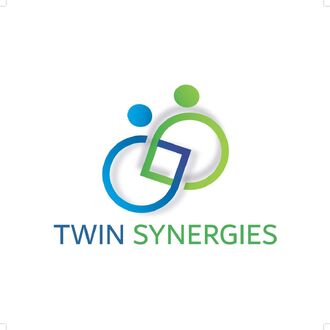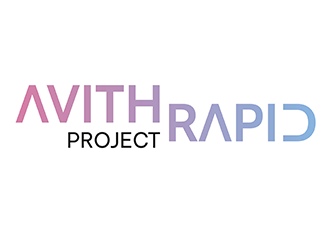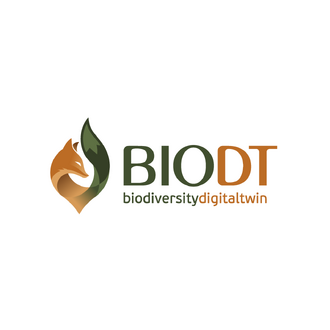IT4Innovations is a research and development centre with strong international links, it is involved in all activities of EuroHPC Joint Undertaking and in a number of prestigious international organisations (PRACE, ETP4HPC, EUDAT, BDVA, EOSC).
IT4Innovations is currently a National Centre of Competence for HPC, a member of the MaX and Space Centres of Excellence and a partner in more than 10 other international projects of Horizon 2020, Horizon Europe or Digital Europe, coordinating the EXA4MIND project. It also collaborates on the European Space Agency (ESA) project called AIOPEN (Platform Extensions with AI Capabilities).
The implementation of national projects financially supported by the Ministry of Education, Youth and Sports, the Ministry of Industry and Trade, the Ministry of the Interior, the Grant Agency of the Czech Republic or the Technology Agency of the Czech Republic is also important. Some of the projects are carried out in the form of contract research with commercial entities.
TOP 5 IT4INnovations PROJEcTs

2023–2026
Project ID: LM2023054
Provider: Large Infrastructures for Research, Experimental Development and Innovation project
e-INFRA CZ is a unique e-infrastructure for research, development, and innovationin the Czech Republic, which represents a fully transparent environment providingcomplex capacities and resources for scientific data transfer, storage, and process-ing to all entities focused on research, development, and innovation across sectors.
It creates a communication, information, storage, and computing platform for re-search, development, and innovation both at the national and international levels. Italso provides an extensive and comprehensive portfolio of ICT services for conduct-ing modern research, development and innovation.
The main components of e-INFRA CZ include:
→ high-performance national communication infrastructure,
→ national grid and cloud infrastructure,
→ most powerful and state-of-the-art supercomputing systems in the Czech Republic,
→ high-capacity data storage facilities.
Other tools and services, such as access control to ICT resources, tools to supportremote cooperation, and tools to ensure secure communication and data protec-tion, are also an essential part and an added value of this infrastructure, contribut-ing to its efficient and diverse use.

EXA4MIND
EXtreme Analytics for MINing Data
2023–2025
Project ID: 101092944
EXA4MIND project will build an Extreme Data platform which brings together data storage systems and powerful computing infrastructures by implementing novel automated data management and effective data staging. The project is driven by four application cases from molecular dynamics, advanced driver assistance systems, smart agri-viticulture and health and social Big Data. The EXA4MIND proposes innovative solutions to complex everyday data-processing problems and addresses critical challenges like data analytics, Machine Learning and Artificial Intelligence at scale; effectively democratising access to and enabling connectivity across EU supercomputing centres.

EuroCC 2
National Competence Centres in the framework of EuroHPC Phase 2
2023–2025
Project ID: 101101903
The mission of EuroCC 2 is to continue the establishment of a network of National Competence Centres (NCC) in the most efficient way while continuing to address the differences in the maturity of HPC deployment in Europe. The main task of the overall activity is to support national centres in setting up their operational frameworks while accessing and making the most of the experience and expertise currently available at national and European levels. The main goal is to drive collaboration, and exchange of best practices and knowledge at the European level and to accelerate the improvement of national and thus European capabilities.

European Open Science Cloud Czech Republic
2023–2028
Project ID: CZ.02.01.01/00/22_004/0007682
The European Open Science Cloud (EOSC) is a European initiative focused on developing infrastructures supporting open science practices in research data management. It offers facilities for storing and sharing so-called FAIR research data – findable, accessible, interoperable, and reusable. The EOSC-CZ project is the implementation of the EOSC initiative in the Czech Republic, which aims to create a national node of this European initiative and promote good practice in research data management across scientific communities. Implementing National Data Infrastructures will create a common platform for sharing, managing, and accessing data and computing resources for research purposes. The NDI will support scientific and multidisciplinary research activities and include various scientific fields and disciplines.
More information here.
MAterials design at the eXascale
2023–2026
Project ID: 101093374
Materials simulations have become one of the most intensive and fast-growing domains for high-performance computing worldwide, with a recognized European leadership in developing and innovating the ecosystem of quantum simulation codes. MAX project will target these lighthouse codes to address the challenges and leverage the opportunities arising from future exascale and post-exascale architectures, and to offer powerful paths to discovery and innovation serving both scientific and industrial applications.
OTHER IT4INNOVATIONS PROJECTS

Software for Efficient and Energy-Aware Supercomputers
2025–2029
Grant agreement number: 101177590
The SEANERGYS project will develop a next-generation software solution to improve the energy-efficient operation of EuroHPC supercomputers. By enhancing the way energy is monitored, managed, and used in supercomputing, the project will help strengthen Europe’s commitment to sustainability. SEANERGYS focuses on four main objectives: reducing the energy consumed by real-world workloads, improving resource utilization, increasing overall system throughput, and optimizing response times, leading to greater research and development output per unit of consumed energy.
IT4Innovations will actively work on developing a set of artificial intelligence models (“model zoo”) designed to predict HPC cluster behavior using data from data center monitoring. IT4I will also create photorealistic visualizations of monitoring data, job schedules, and predicted future system states. In addition, IT4I will focus on dynamic resource management to improve resource utilization and energy efficiency, developing the MERIC software suite to measure energy consumption and optimize CPU and GPU settings.

LUMI AI Factory – Service Center
2025–2028
Project ID: 101234208
As AI technologies and methodologies continue to advance swiftly, Europe has been actively developing and strengthening the ecosystem of frameworks, environments, tools and services required to boost innovation. This comprehensive approach aims to harmonise AI strategies across the continent, addressing the technology’s challenges and opportunities while assessing its impact on public and private sectors and society at large. The LUMI AI Factory Service Center project is a part of the broader LUMI AI Factory ecosystem leveraging the current LUMI supercomputer but gearing up for the upcoming LUMI-AI system, and the related AI-optimised quantum experimental platform LUMI-IQ.

Optimization of low-speed characteristics & performance of aircraft
2/2025 – 6/2026
Project ID: 101163317
Companies specializing in custom aircraft manufacturing, BRM Aero and Airmobis, have formed a partnership with IT4Innovations to focus on the shape and configuration of aircraft flaps in order to achieve maximum aerodynamics. By leveraging advanced technologies such as artificial intelligence, digital modelling, neural networks, and supercomputer-accelerated simulations, they aim to develop a methodology that enables the creation of an optimized aircraft design in a fraction of the time and cost. This approach will also help reduce the aircraft's weight and material usage, increase cruising speed, and lower fuel consumption.

A Hybrid Generative AI-model for Resolving Molecular Structures integrating sequence and Cryo-Electron Microscopy data
1/2025 – 10/2025
Project ID: 101163317
The project aims to develop a novel open-source AI model by incorporating cryo-EM data into the OpenFold model architecture. This collaboration is designed to enhance prediction accuracy and confidence of generated 3D protein models. PUXANO’s structural biology capabilities will allow for rapid model validation and the generation of a unique proprietary service platform coupled to an open-source AI model for protein model prediction.

Digital Twin of Earth system for Cryosphere, Land surface and related interactions
2025–2028
Project ID: 101187992
TerraDT is a groundbreaking digital twin project designed to enhance our understanding of how glaciers, sea ice, vegetation, and aerosols influence the Earth’s climate. By delivering high-resolution climate impact assessments, it will provide concrete decision-making tools for local planning, such as helping determine optimal locations for shipping routes, parks, and other infrastructure. The project will leverage Europe's most advanced supercomputers to achieve unprecedented modelling accuracy.

Empowering participation and accelerating synergies in Widening countries with a focus on Green & Digital Transition
2024–2026
Project ID: 101160135
There are significant differences in research and innovation (R&I) performance among EU member states, leading to varying participation levels in funding programs based on excellence. Low participation limits the ability of underperforming countries to improve their R&I systems. The TWIN SYNERGIES project aims to foster synergies at both operational and governance levels, focusing on human resources development and internationalisation. It will consider Smart Specialization Strategies, which are crucial for achieving smart growth at the EU level. TWIN SYNERGIES will develop tailored, transferable activities for capacity building, internationalisation, collaboration, and technology uptake, particularly in relation to the Green and Digital transitions. The project will also emphasise improving cooperation and communication among key stakeholders, including EU and national authorities.

A European Network of TRUSTed research environments
2024–2027
Project ID: 101131056
The project will create a European network of trusted research environments for sensitive data and drive interoperability through the joint development of a common blueprint for federated data access and analysis. EOSC-ENTRUST connects national centres, research organisations and scientific communities to implement, validate and promote their capabilities using shared standards and common language. The project has identified four driver projects covering genomics, clinical trials, social science, and public-private partnerships to benchmark capabilities, inform blueprint design and demonstrate secure data analysis using federated workflows.

Performance Optimisation and Productivity 3
2024–2026
Project ID: 101143931
The key element to ensure efficient use of HPC infrastructures is to optimise the performance and efficiency of the applications. The Centre of Excellence on performance optimisation and productivity (CoE POP) was initiated in October 2015 with the fundamental purpose of assisting a broad community of HPC application developers and users in science and industry domains. The current proposal of the POP3 project is articulated in 3 pillars: services, users and codesign. POP services mainly focus on performance assessments to evaluate code performance and scale, identifying the main sources of inefficiency or improving energy efficiency. POP3 will focus on the European flagship HPC applications for other CoEs. However, it will still provide services to prescribers and SMEs to promote an efficient usage of computing resources.

Antiviral Therapeutics for Rapid Response Against Pandemic Infectious Diseases
2024–2028
Project ID: 101137192
Project AVITHRAPID aims to support the search for novel broad-spectrum antiviral compounds by advancing multiple approaches. Building on a pre-existing set of bioactive small molecules, which are at least at the validated hit level, AVITHRAPID strives to develop pre-clinical candidates targeting several viruses. This will be achieved by combining the relevant expertise for pre-clinical drug discovery, including molecular modelling, biochemical and cell-based assays, X-ray crystallography, medicinal chemistry, biophysical binding studies, ADMETox profiling, in vitro and in vivo, as well as animal disease models. As a consequence of the activities in the AVITHRAPID project, an early-stage drug discovery pipeline will be established that can be used to rapidly identify and develop novel antiviral compounds against emerging diseases.

Foreseeing the next generation of Aircraft: hybrid approach using Lattice-boltzmann, experiments and modelling to optimize fluid/struCture interactiONs
2024–2027
Project ID: 101138305
Aviation transport is the second biggest source of greenhouse gas emissions after road transport. One of the main levers to decrease CO2 emissions is to reduce the airframe structural weight. The growing amount of air traffic means that many EU citizens are still exposed to high noise levels. FALCON’s ambition is to enhance the design capabilities of the European aircraft sector, focusing on fluid-structure interaction (FSI) phenomena to improve the aerodynamic performances of aircraft. Specifically, FALCON aims to develop high-performance, predictive and multi-disciplinary tools for FSI in aeronautics in order to reduce the aeroacoustics and aeroelastic instabilities using multi-fidelity optimisation. To achieve its ambitious goal, FALCON assembles a unique interdisciplinary environment of fifteen public and private institutions and their affiliated entities from renowned research institutions to SMEs and suppliers.

Integration of biodiversity monitoring data into the Digital Twin Ocean
2023–2027
Project ID: 101112823
The primary objective of the DTO-BioFlow project is to awaken sleeping biodiversity data, enabling a smooth integration of both existing and new data into the Digital Twin Ocean. The project aims to provide innovative and sustainable solutions for making previously unavailable or hard-to-access biodiversity data accessible. Additionally, it will pilot cost-effective and scalable technologies for monitoring species on a large scale. DTO BioFlow wants to improve the European biodiversity data environment by streamlining the flow of FAIR data from various sources into digital twin repositories, optimising and enhancing the functionality and societal value of DTO.

MAterials design at the eXascale
2023–2026
Project ID 101093374
Materials simulations have become one of the most intensive and fast-growing domains for high-performance computing worldwide, with a recognized European leadership in developing and innovating the ecosystem of quantum simulation codes. MAX project will target these lighthouse codes to address the challenges and leverage the opportunities arising from future exascale and post-exascale architectures, and to offer powerful paths to discovery and innovation serving both scientific and industrial applications.

Scalable Parallel and distributed Astrophysical Codes for Exascale
2023–2026
Project ID: 101093441
In Astrophysics and Cosmology, High-Performance Computing-based numerical simulations are outstanding instruments for scientific discovery. They represent essential tools and theoretical laboratories able to understand physical processes behind the observed sky for which the effective exploitation of exascale computing capabilities is essential. Exascale systems have an unprecedented architectural complexity with a significant impact on simulation codes. The SPACE Centre of Excellence aims to extensively re-engineer target codes to engage with new computational solutions and adopt innovative programming paradigms, software solutions, and HPC libraries.

EXtreme Analytics for MINing Data
2023–2026
Project ID: 101092944
EXA4MIND project will build an Extreme Data platform which brings together data storage systems and powerful computing infrastructures by implementing novel automated data management and effective data staging. The project is driven by four application cases from molecular dynamics, advanced driver assistance systems, smart agri-viticulture and health and social Big Data. The EXA4MIND proposes innovative solutions to complex everyday data-processing problems and addresses critical challenges like data analytics, Machine Learning and Artificial Intelligence at scale; effectively democratising access to and enabling connectivity across EU supercomputing centres.

Piloting a Cooperative Open Web Search Infrastructure to Support Europe’s Digital Sovereignty
2022–2026
Project ID: 101070014 (HORIZON-CL4-2021-HUMAN-01, RIA)
In the OpenWebSearch.EU project, 14 renowned European research and supercomputing centres joined forces to develop an open European infrastructure for web search. This project will contribute to Europe’s digital sovereignty and promote an open, human-centred search engine market. Within three years, the researchers will develop the core of a European Open Web Index as a basis for a new Internet Search in Europe. In addition, the project will set the foundation for an open and extensible European Open Web Search and Analysis Infrastructure based on Europe’s values, principles, legislation, and standards.

Biodiversity Digital Twin for Advanced Modelling, Simulation and Prediction Capabilities
2022–2025
Project ID: 101057437 (HORIZON-INFRA-2021-TECH-01, RIA)
BioDT aims to push the current boundaries of a predictive understanding of biodiversity dynamics by developing a Digital Twin providing advanced modelling, simulation, and prediction capabilities. By exploiting existing technologies and data available across relevant research infrastructures in new ways, the BioDT project will be able to model the interaction between species and their environment accurately. Scientists at Research Infrastructures will be able to use the BioDT to 1) better observe changes in biodiversity, 2) relate these changes to possible causes, and 3) better predict the effects of changes based on influences on these causes by either climate or human intervention. The consortium brings together a dynamic team of experts in biodiversity, high-performance computing, and artificial intelligence.

